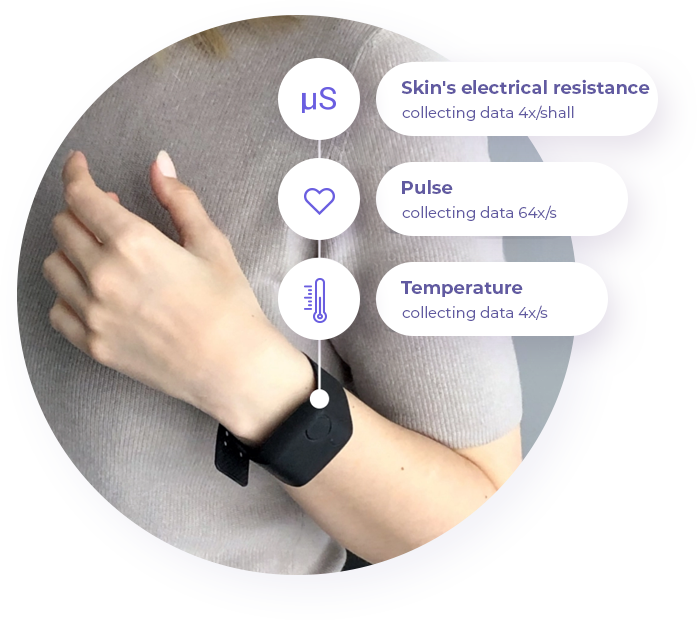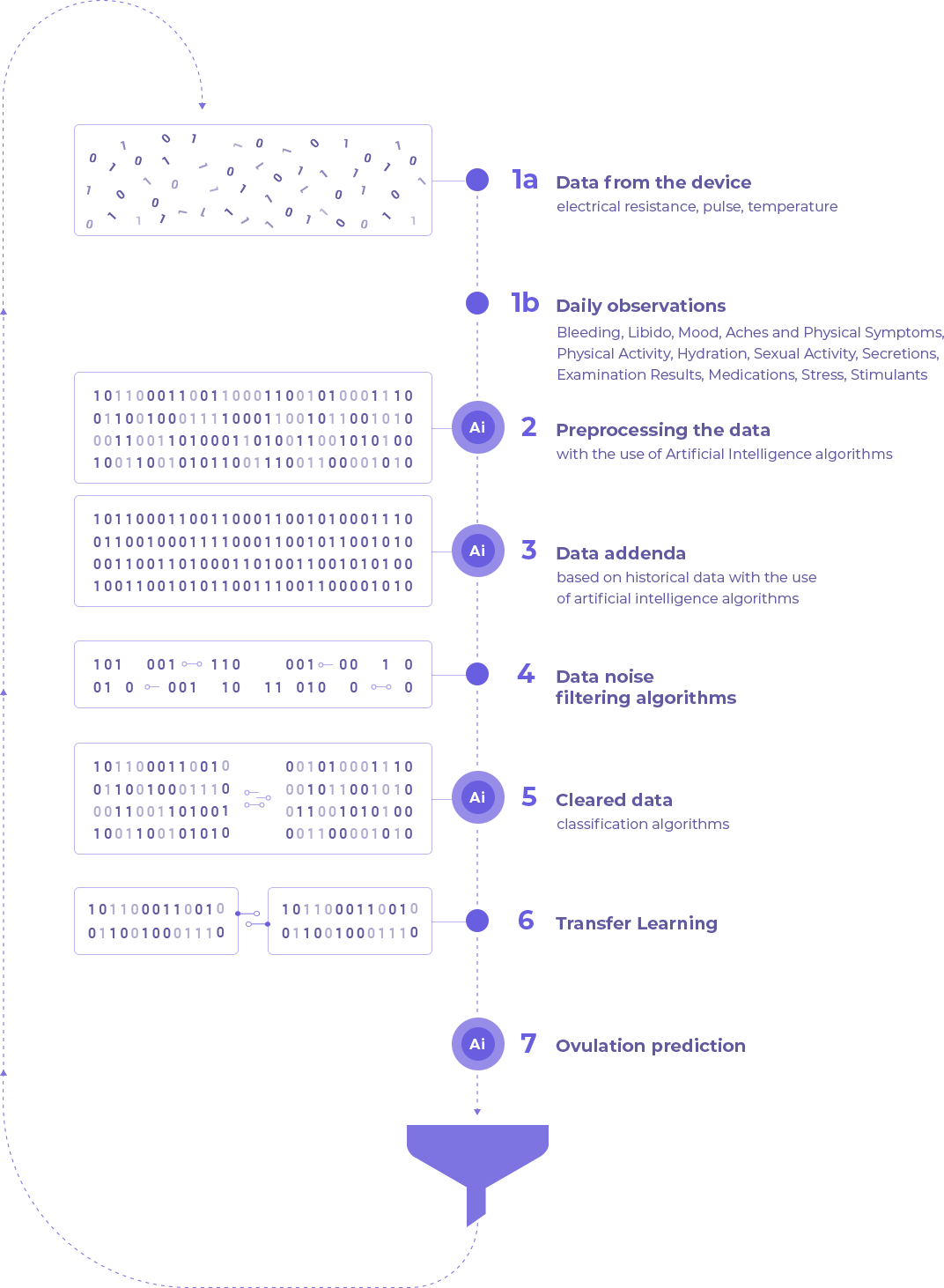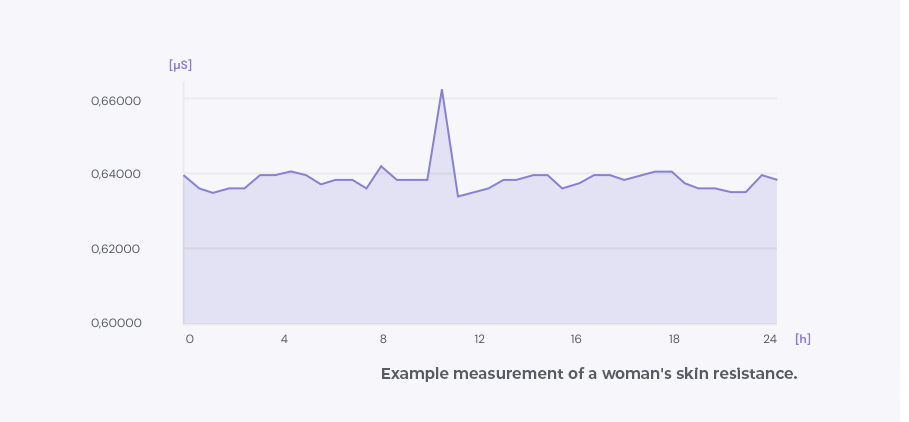
Technology
The Bambino.ai+ application has been developed based on a defined algorithm with the use of artificial intelligence, and makes it possible to predict the best time for getting pregnant in a way not interfering with the natural rhythm and comfort of a woman’s life. It uses the parameter of the woman’s skin electrical resistance , using the pulse and temperature, it clears the data for predicting, and makes it possible to correlate its changes with the ovulation days.
Testing the electrical resistance is our specialty
The skin electrical resistance is a parameter, which makes it possible to follow a trend, rather than specific measured values, as in the case of temperature measurements. So far, this parameter has been used in polygraph examinations or for biofeedback. At bambino, we go one step further! Bye means of a medical device, the data is collected and analyzed 4 times per second.
Owing to the fact that each woman’s body has different electrical resistance, and additionally to its changes depending on the cycle phase (amplitude based on the cycle and body part is ~ 1.×10^9 [µS]) it was required to apply artificial intelligence algorithms at different stages of creating the algorithm, namely from the machine learning stages, to the predicting stages

Artificial intelligence
In connection with a very high complexity of the problem (electrical resistance is specific for each organism and the relations are non-linear) that the team was facing at different stages of creating the algorithm, various artificial intelligence algorithms have been employed depending on the emerging needs – from simple classification networks to advanced Deep Learning, together with the use of Transfer Learning, which actions made it possible to achieve such great results, which additionally improve at subsequent cycles and for subsequent users.
More about how the algorithms work>
Data transfer diagram

1
Data from the forms and the smart band
are send via a smartphone into the cloud
2
The artificial intelligence system processes
and sends the prediction to the phone as notifications
How the Algorithms Work

More about electrical resistance

The human body, as an element of an electrical circuit, is not a homogeneous conductor, but an anisotropic conductor. The first studies on the human body’s resistance were performed by J. Runge in 1870, who demonstrated that the resistance of the epidermis is higher than that of the subcutaneous tissue.
The impedance of the human body depends on bio-physical factors, and is determined by the contact resistance, the skin impedance, and the resistance of internal organs. The contact resistance of electric current passing through the skin depends on the effective touch voltage, the contact area, and the force of pressing against the electrode, and on the moisture and state of the epidermis. The skin impedance changes under the influence of external factors, and its value is determined by calloused epidermis. The electrolyte- rich environment inside the organism has a very low resistance relative to the skin impedance.
The impedance of the human body is characterized by its resistive – capacitive nature. The internal organs are resistive, as opposed to the resistive – capacitive nature of the epidermis.
The human skin is composed of two layers: the epidermis and the dermis. The skin’s activity status is closely associated with its physical properties.
F. Jolly has concluded that the resistance value of a woman’s body is 30% higher than that of a man, and is affected by changes in the body. Today, we know that the skin resistance is specific for the body of each woman, and, in addition, it changes depending on the phase of her menstrual cycle.
The electrical resistance is measured in microsiemens [µS]
1µ𝑆 = 1 · 10−6 Ω1
In different parts of the body, the skin resistance is different (approx. 1000 Ohms of difference between various body parts). In our examinations, we use measurements from the wrists. Two silver-plated electrodes with a diameter of 11 mm are placed 2mm apart, and they read the electrical resistance 4 times per second, which ensures the repeatability of the measurements. The rest values and the values during different activities differ, which could affect the results. In order to classify these values, other parameters of the human body and the AI algorithms should be used.

See how the examinations were made
We have conducted clinical trials supervised by the best gynecologists and endocrinologists
